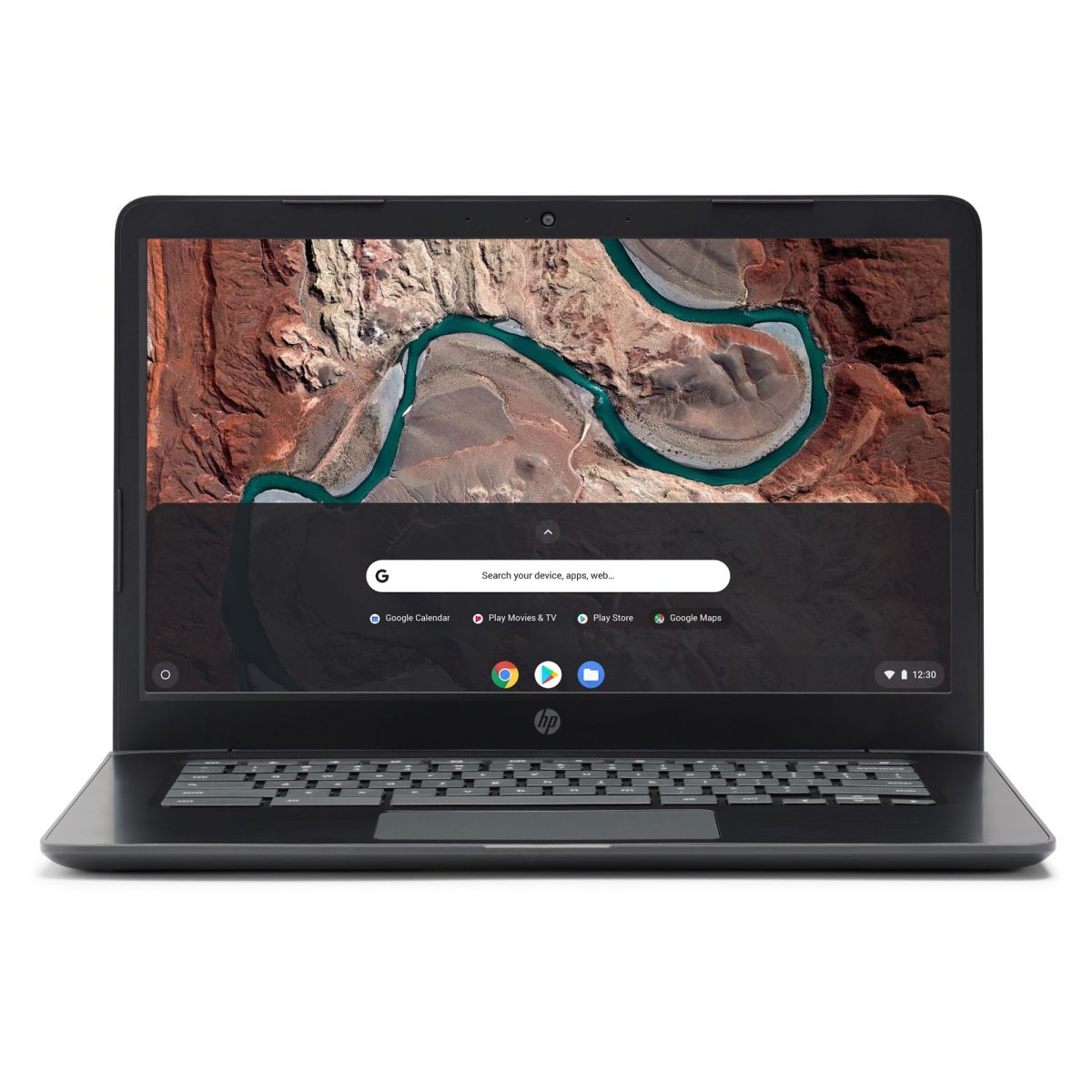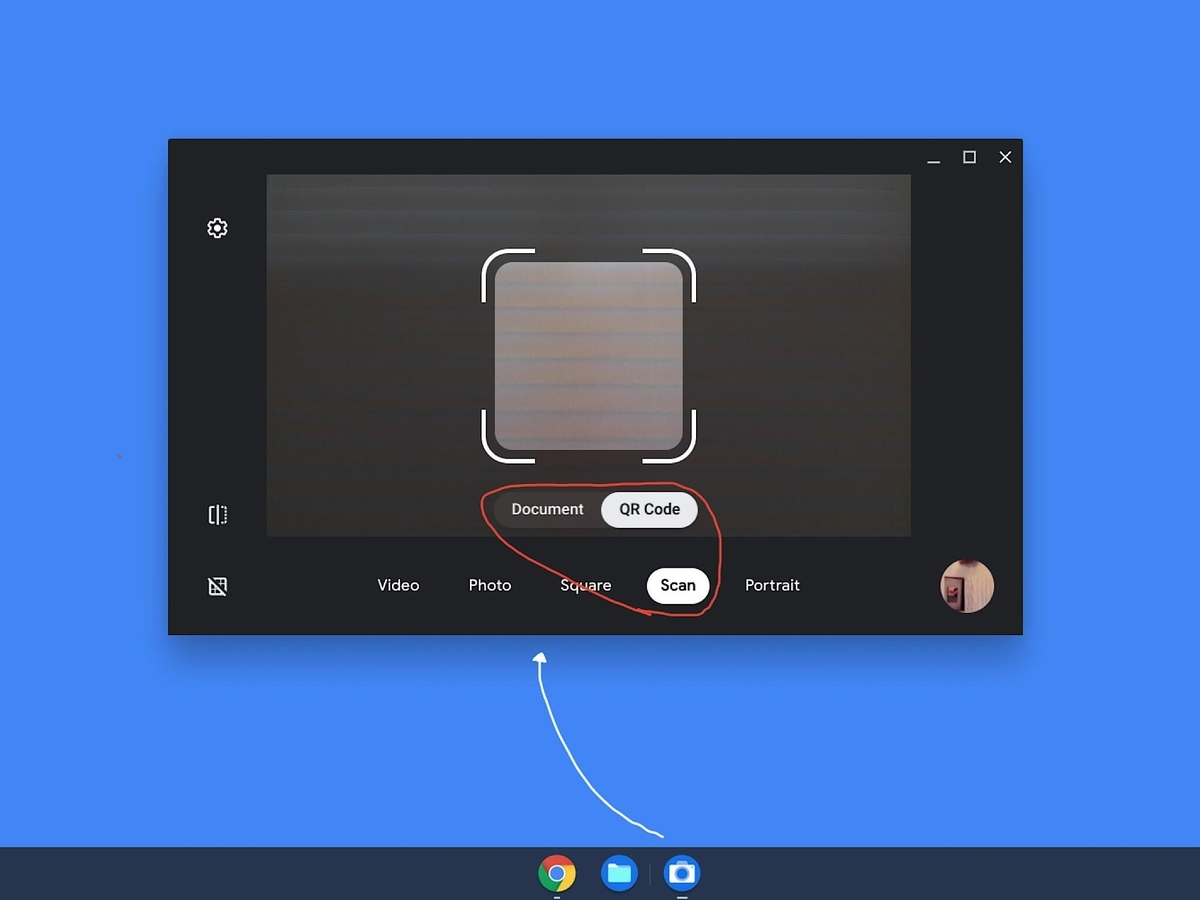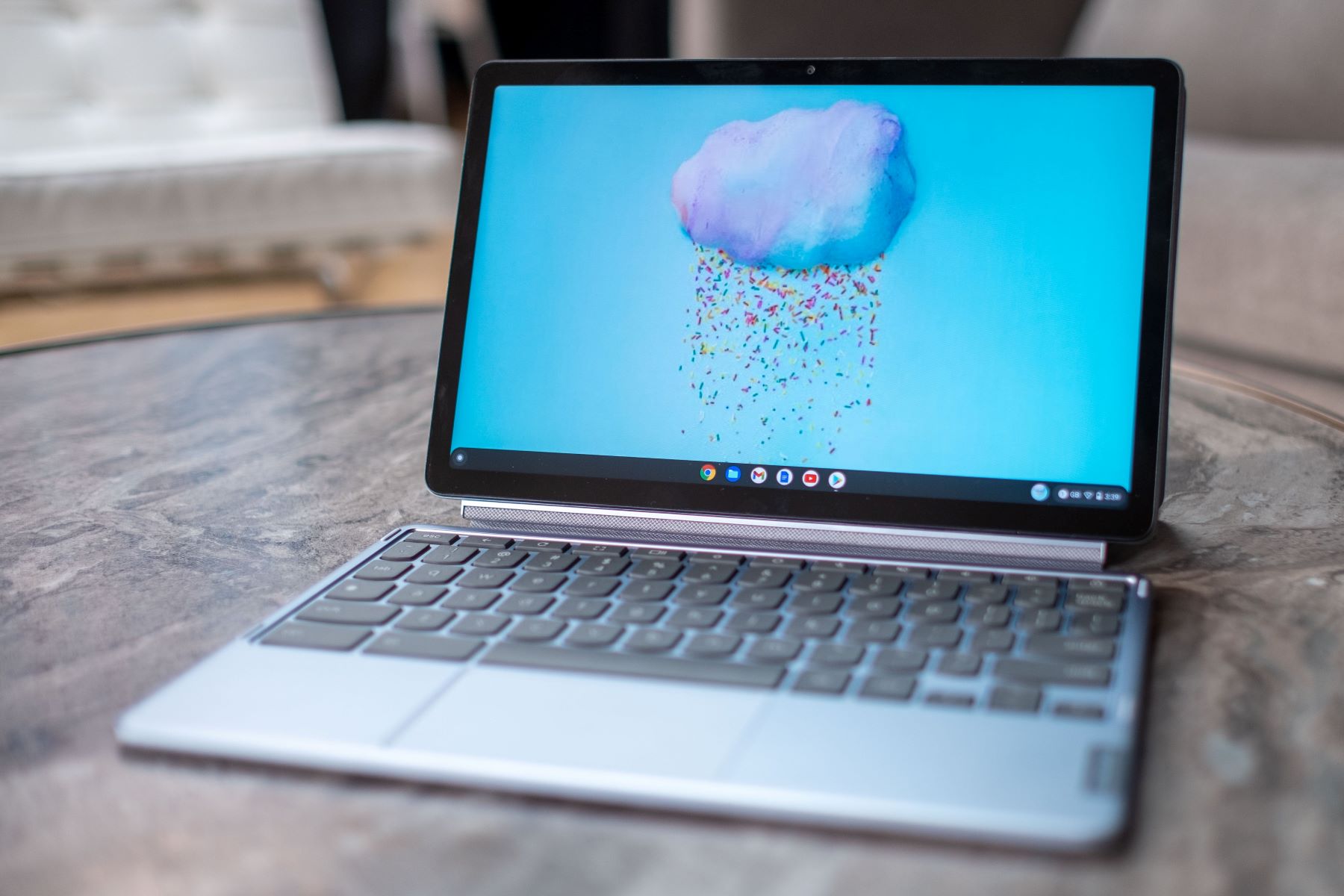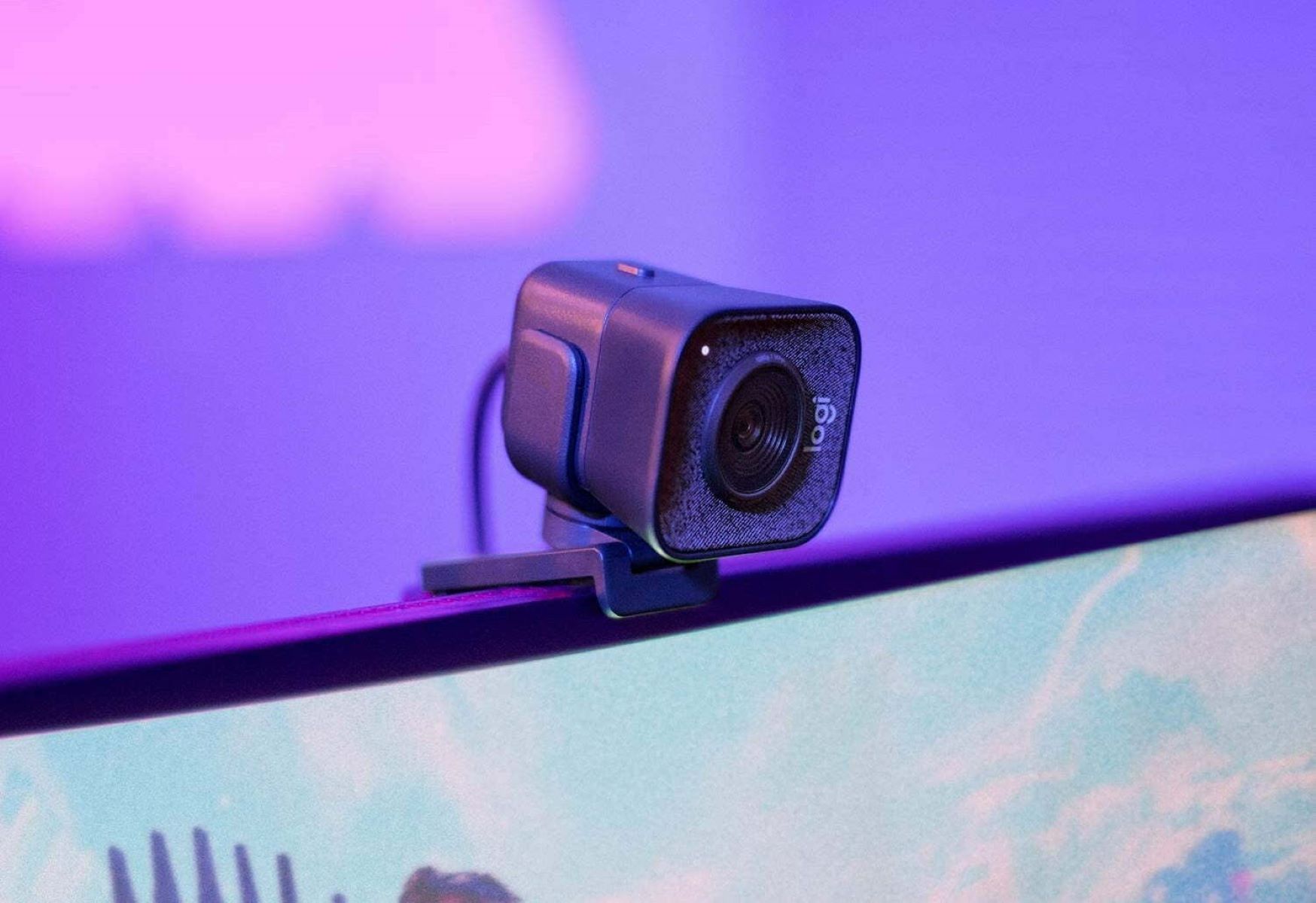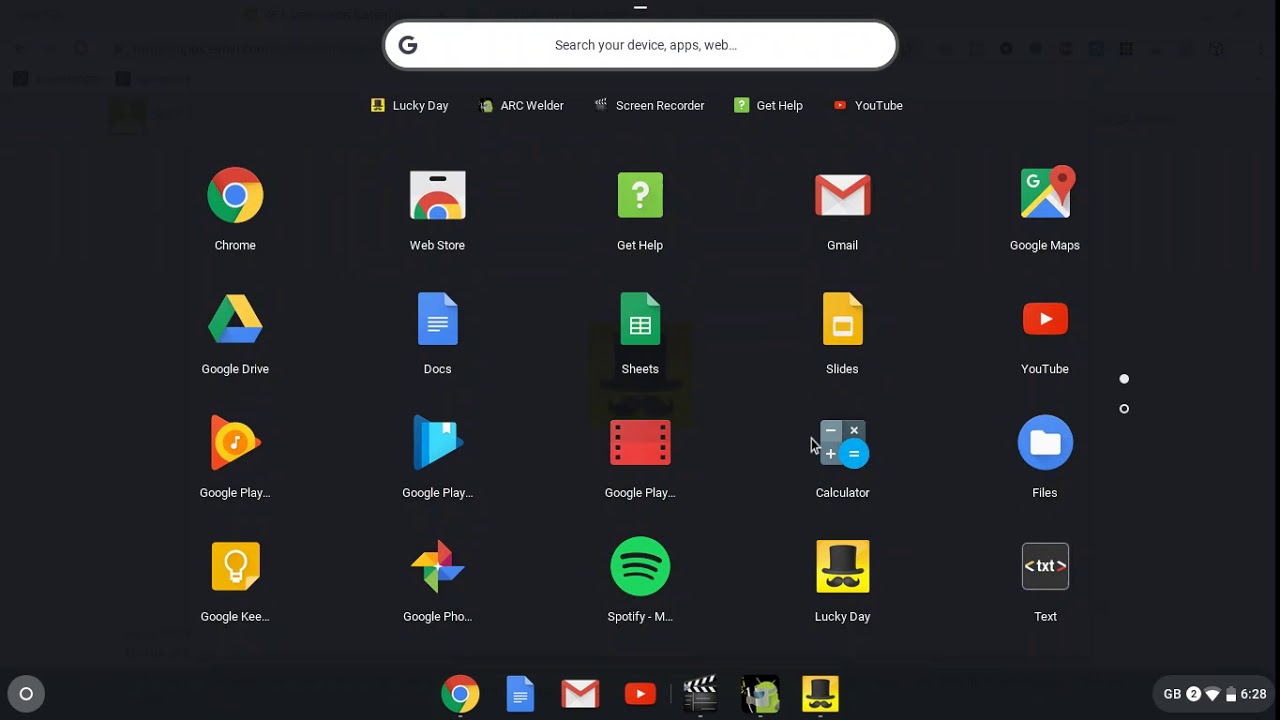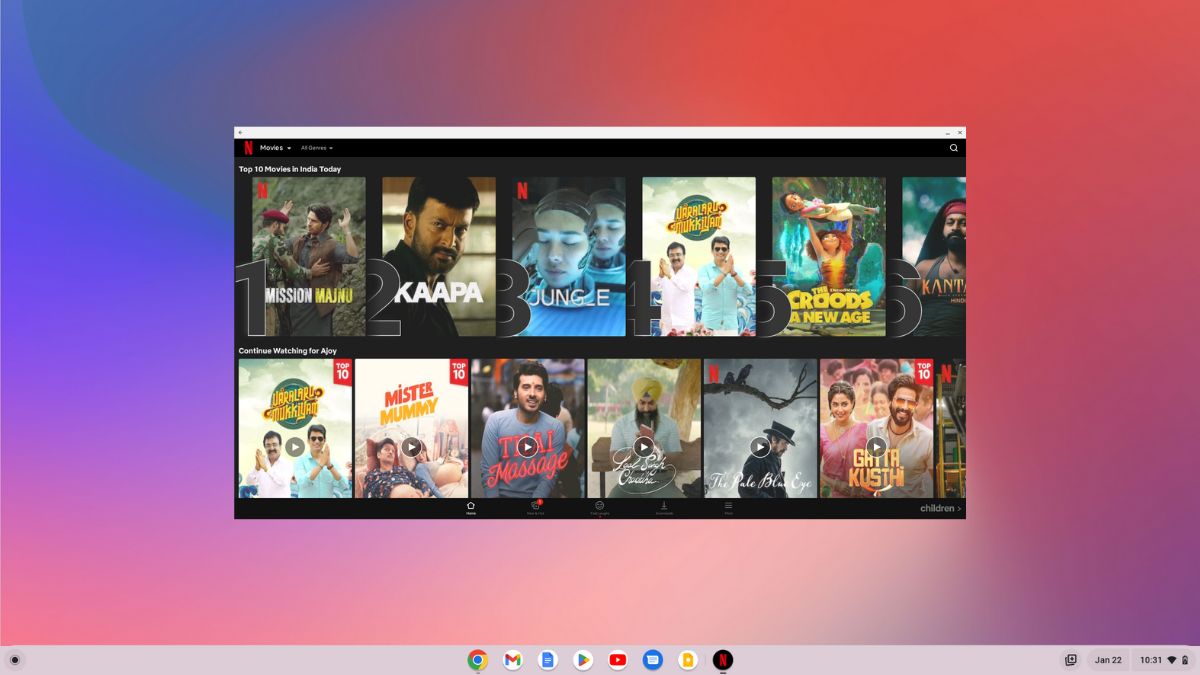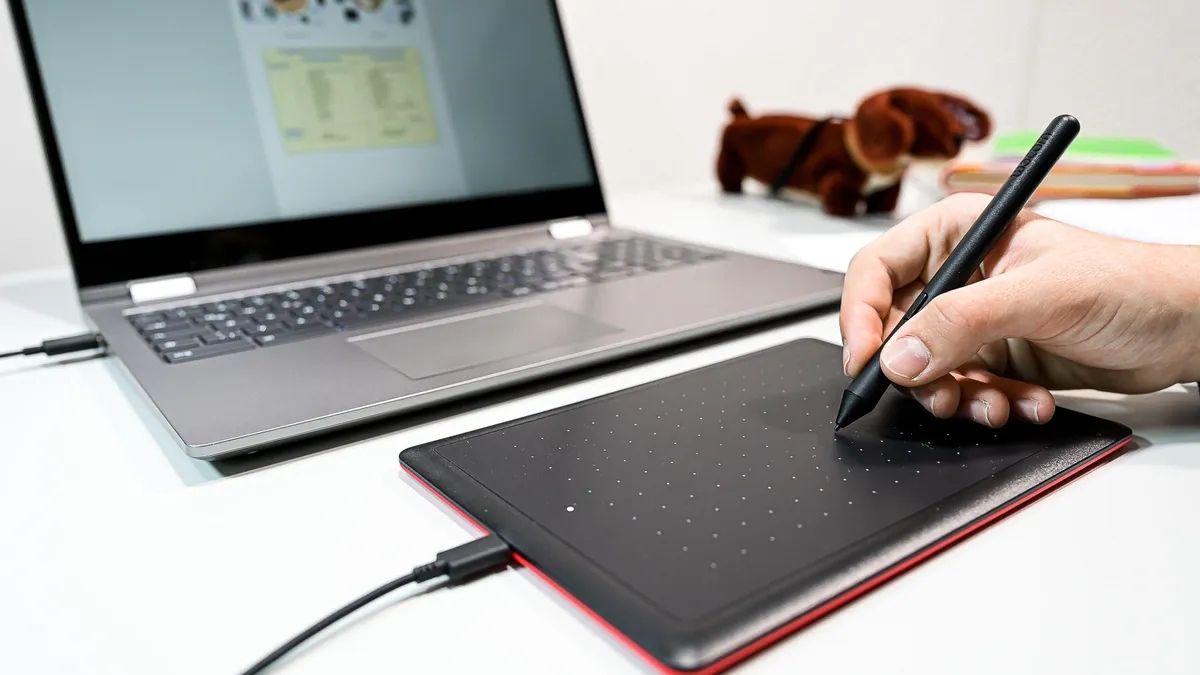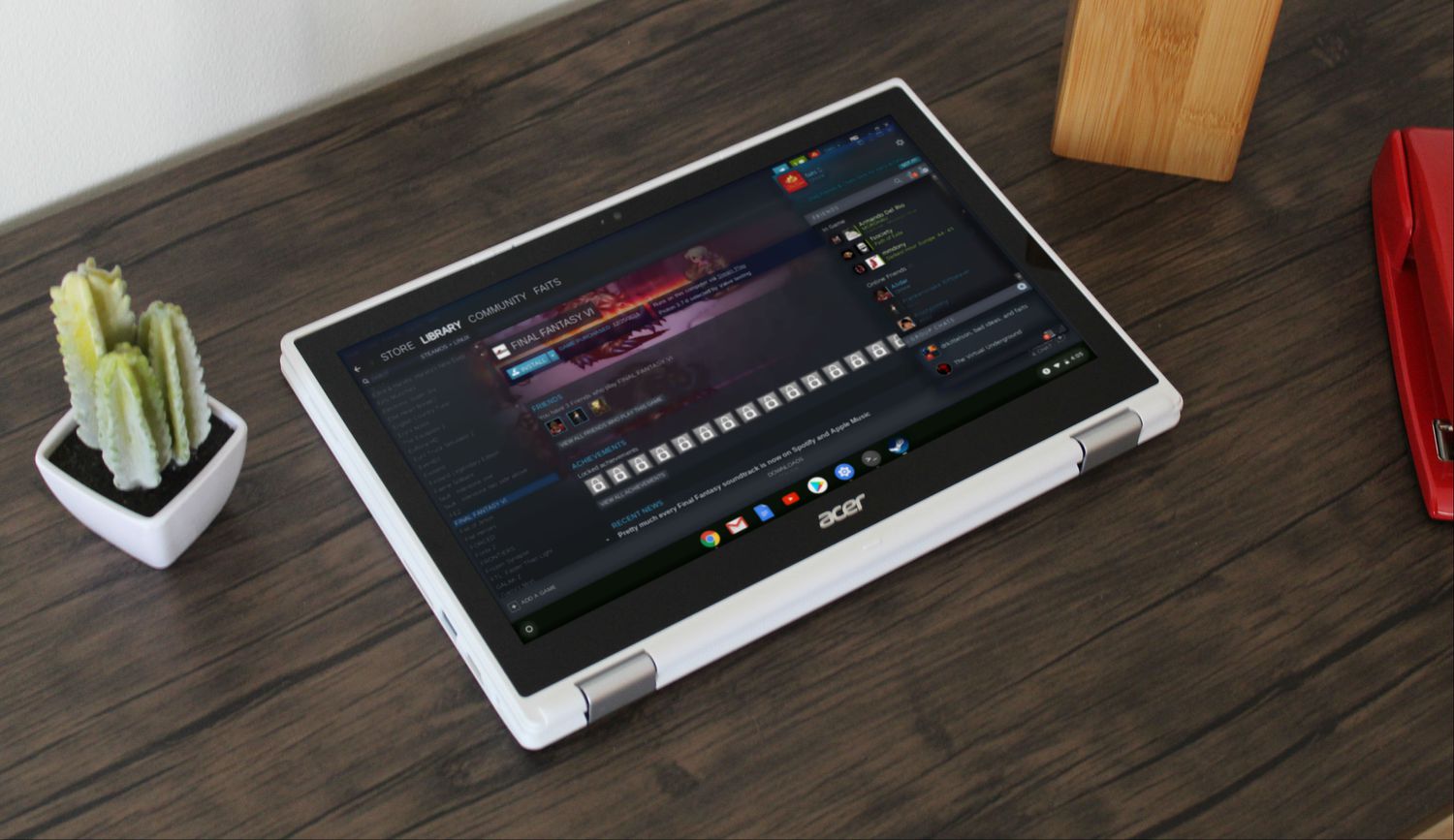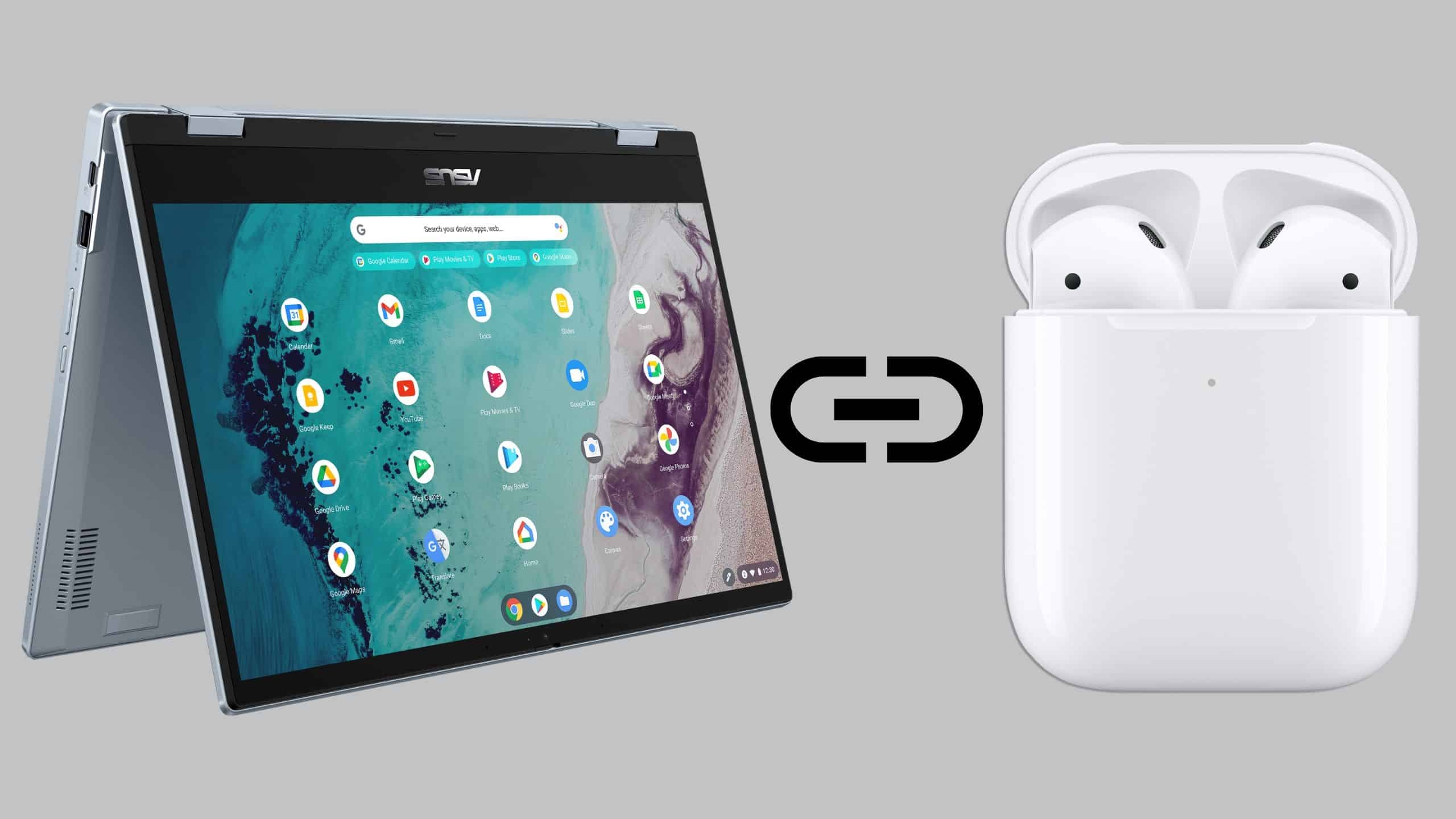The best Chromebook apps will allow you to do more with your Chromebook devices. Chromebooks originally focused exclusively on Google-based apps like Google Drive and Gmail. However, Google has recently expanded its functions to accept Android-based and Linux-based apps. In this review, we’ll look at some of the more useful apps you can download for your Chromebook device. Our list covers everything from productivity apps to fun gaming apps.
Inside this Article
- What is a Google Chromebook?
- 12 Best Chromebooks to Increase Your Productivity in 2021
- What Sets Chromebook Apart from Mac and Windows Devices?
- Final Thoughts on the 12 Best Chromebook Apps to Increase Your Productivity in 2021


What is a Google Chromebook?
A Google Chromebook is any device that runs on the Linux -based Chrome OS. At the very core of Google Chromebooks is the Chrome browser. The browser is the default interface for connecting to the internet. It also serves as the access point for all other Chrome-based software that is pre-installed in the device.
Chrome OS is a cloud-focused operating system. This means that all of your files and online data are automatically synced with the cloud. Other types of data, such as your Google extensions, passwords, and settings, also sync to the cloud. All of your data is automatically backed into the cloud, specifically Google Drive. This should make it easy to migrate your files to and from Chromebook and another computer.
Chromebooks are generally seen as much lighter compared to Windows-based computers application-wise because they come with limited software pre-installed. Three years ago, Chromebooks did not allow users to download external apps from Google Play or other app stores. Nowadays, it offers full support for Android- and Linux-based apps. This means that you can download any other app on the Google Play Store or Linux app store.
Many people also consider Chromebooks to be much safer than Windows-based devices. That’s because each web page and Chrome app runs inside a virtual sandbox. This protects other parts of the computer from getting affected by an infected page. And as soon as the problem page is closed, the threat is destroyed.
Check out: How to Clear Search History Completely on Chrome
12 Best Chromebook Apps to Increase Your Productivity in 2021


Now that Chromebooks can work with Android apps, users have much more choices now than ever before. Whether you need an external app for work or fun, it should now be possible to get any app you need. The only requirement is for your Chromebook to have either the Google Play Store or Chrome Web Store. In any case, we’ve listed some of the best Chromebook apps with different purposes to help you make the most out of your beloved devices:
1. ASTRO File Manager
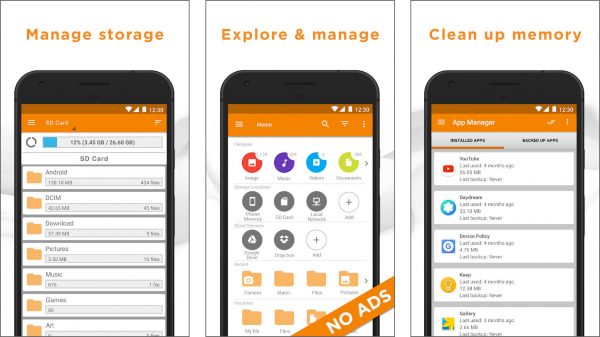

File Manager by ASTRO is one of the more popular file manager options and Chromebook apps on Google Play. The program helps users manage all of the files on their computers.
With ASTRO, you can manage your files systematically and easily. You can view, edit, copy and delete files and folders on your computer and on an SD card. You can also create compressed files, extract compressed files and search for files. Another great feature is the search function for detailed file searches. That includes letting you search for files through specific folders, subfolders, file size, and more. You can also search for specific types of files by keying in .doc, .jpg, or .mp4. Similarly, you can sort files by title, name, size, and date.
It also comes with a Process Manager tool that allows you to view all the apps that are running on your Chromebook. This helps you keep track of storage space on your device and lets you add and delete apps. Astro also has a limited but useful backup capability, and this tool will help you manage your hard drive easily. The program is completely free, which means you only need to head over to Chrome Web Store to get it.
Get Astro File Manager from Google Play
Visit Astro File Manager Official Website
2. Chrome Remote Desktop
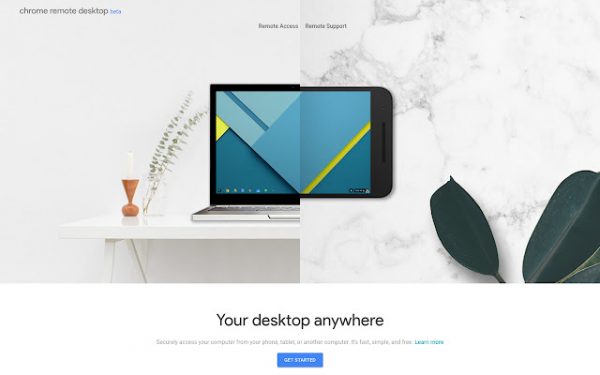

Chrome Remote Desktop is a Chromebook app that lets you access your Chromebook remotely. It lets you access your files from one computer to another. The best use case would be being able to access your work computer from your home-based desktop. There’s a brilliant mechanism behind this software that makes this possible.
But first, you’ll have to download the browser extension on the computer that you want to access. Enter the name of the desktop along with the desktop PIN. You might also need to adjust permissions to give access to remote devices along the way. On the other hand, you’ll also need to have Remote Desktop installed on the device you intend to use to get remote access. You can then set up multiple PINs, one for each computer that you need to access remotely.
After you’ve completed the process, you should be able to access your host device remotely with only your username and password. The crossover from your remote to an alternate desktop should be fast and smooth. However, there might be some interference along the way, especially if your internet isn’t fast. Learn how to check your internet speed so that you can maximize this feature.
You might also notice that the program takes on a minimalistic design. There are only a few functions and menus available. Nonetheless, this should be all you need to get access to your desktop computer remotely. They also offer a simple help guide for setting up remote access or removing the application.
Get Chrome Remote Desktop from Google Play
Get Chrome Remote Desktop from Chrome Web Store
3. DocuSign
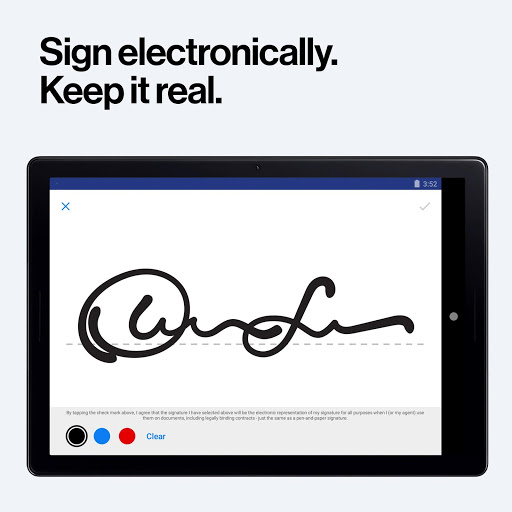

Adding your signature on a contract or document used to mean having to print the whole thing. Nowadays, many organizations are starting to recognize the validity of electronic signatures. This brings up the need to rely on online platforms to submit documents for approval, and this is where DocuSign comes in. This software lets you sign documents directly on your tablet, computer or smartphone. The software is currently breaking records based on the number of downloads.
With DocuSign, you can sign and send documents easily through several channels. That includes email, Google Drive, Dropbox, Evernote, and other external apps. Since people have safety concerns about sending documents online, DocuSign encrypts all the documents before sending them. Encryption will make it harder for unauthorized parties to steal the data.
The software lets you add “sign here” tabs on the documents that need to be signed by other people. You can also remind users to sign a document via email verification using a single tap as well as receive real-time notifications regarding the document’s status. Last but not least, the software doesn’t impose a maximum number of documents for signing. It’s completely free and is constantly updated by a dedicated developer team.
Get DocuSign from Chrome Web Store
Visit DocuSign Official Website
4. Spotify
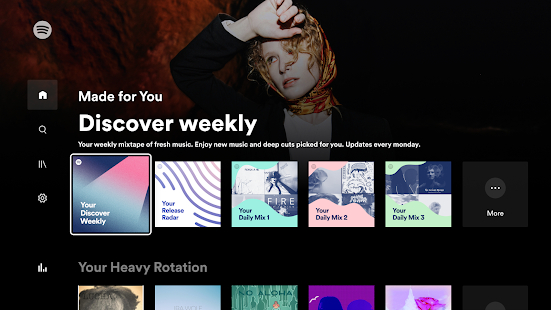

Spotify is one of the biggest names in the music streaming industry, and for a good reason. The software features a massive music library, customizable playlists, and social features. On top of that, it’s available on all major mobile platforms. Of course, there are different tiers of subscription to consider. A free option is available but this offers limited access to songs.
The very thing that makes Spotify stand out is its massive library of songs. It has over 50 million songs, and it even has non-musical materials like audiobooks, podcasts, and more. Just thinking about the number of songs you can play is enough to make anyone dizzy. But you don’t have to worry since you can create your own playlists focusing on your favorite songs. They also offer a collaborative option for building playlists called Group Session. With this, you can invite up to four friends or family members to chip in their favorite songs.
Get Spotify from Chrome Web Store
Visit Spotify Official Website
5. All-in-One Messenger App
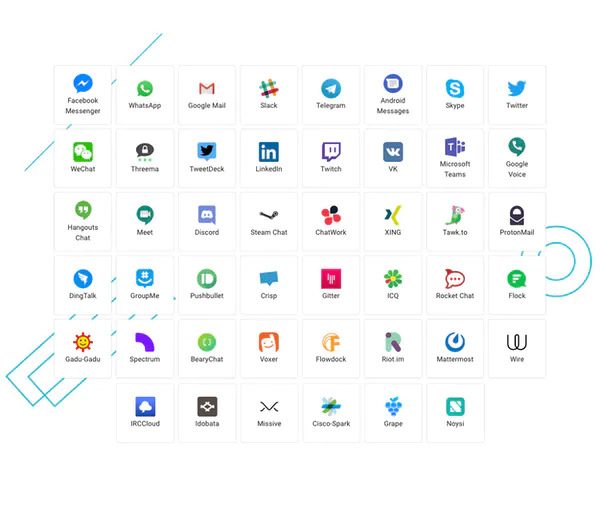

Social media definitely plays a large part in our activities online. However, having an active social media profile becomes difficult to maintain the more social media accounts we have. All-in-One Messenger seeks to address the problem by offering a single space for all of your communication channels and social media. Think of this software as File Manager for social media apps. The app supports nearly 30 social media websites including Facebook Messenger, WhatsApp, Telegram, and Messenger. It also supports work-based communication apps like Slack, Microsoft Teams, and more.
With this app, you can get a consolidated view of your unread messages through the app interface. You also get on-screen notifications for all messages, so you never miss out on any message. Users are also given the ability to respond to messages in-app, so you don’t have to open icons individually. You can also customize notifications for each app depending on your priorities.
The app is also very user-friendly and can be used intuitively. It offers a few options for customizing app design. You can select your own theme for each app, and they also offer a Dark Mode for a more serious look. Overall, this app is a simple but brilliant solution to navigating social media.
Get All-in-One-Messenger from Google Play
Visit All-in-One-Messenger Official Website
6. Aquamail
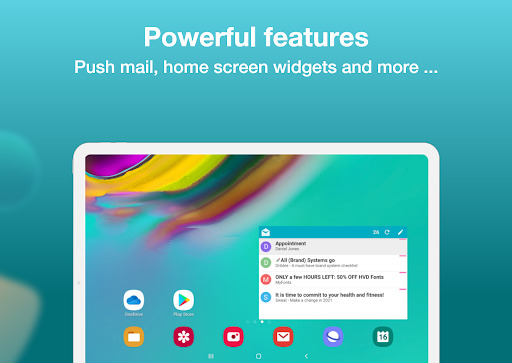

Aqua Mail is an all-in-one mailing solution that you can use to organize your email accounts. The app unifies all of your emails from different accounts into one smart folder. This allows you to access all of your emails in one go, so you don’t miss a thing. The app features more than 300 customizable settings and a rich text editor. A rich text editor is an online tool that allows users to format text within a web browser. Aqua Mail benefits from the power of strong email encryption.
The service currently supports email channels such as Gmail, Hotmail, Yahoo, and more. It also supports email accounts hosted by Google Apps, Office 365, and Exchange Online. You can even exchange your Sync contacts and calendar with Aqua Mail. This feature will help you keep up with all of your appointments. Besides that, it will also provide you with push mail for exchange servers and Office 365. You also get extra support for multiple email accounts. As a one-stop shop for email accounts, Aqua Mail is definitely a must-have Chromebook app.
Get Aqua Mail from Google Play
Visit Aqua Mail Official Website
7. Firefox Focus
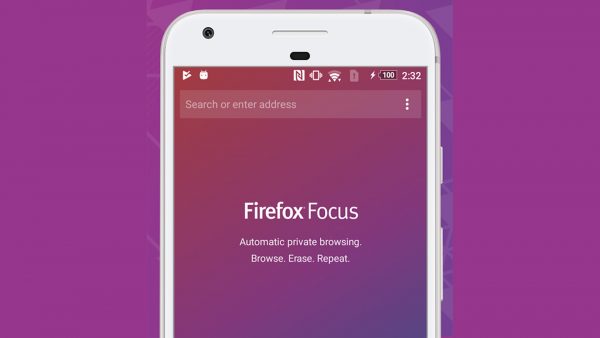

Chrome is a great web browser, but not everyone is going to be happy with it. In that case, you could go for a more lightweight or secure option, one of which is the Firefox Focus. This browser is a variation of the original Firefox that focuses more on security. It offers better protection against all forms of trackers. Focus is also designed in a way that makes it easier for you to delete your online data. That is, you will find a rubbish bin icon on every page that wipes everything and lets you get back to the home page.
Unfortunately, there are trade-offs for added security. First off, you cannot view multiple tabs on this browser due to the lack of a tab system. You also can only watch fill screen videos on websites like Vimeo. That means if you love to watch YouTube videos or the like, Focus may not be the ideal option for you. It also doesn’t let you take screenshots for some reason. But you can solve this issue by turning on Stealth mode.
Other than offering better security, the browser is also designed to be lightweight. It only takes up a total of 7MB of storage, which means that it should be easy to install and equally easy to remove. As an alternative to Google Chrome, Firefox Focus is a must-have on the list of Chromebook apps.
Get Firefox Focus for Google Play
Visit Firefox Focus Official Support Page
8. Clipchamp
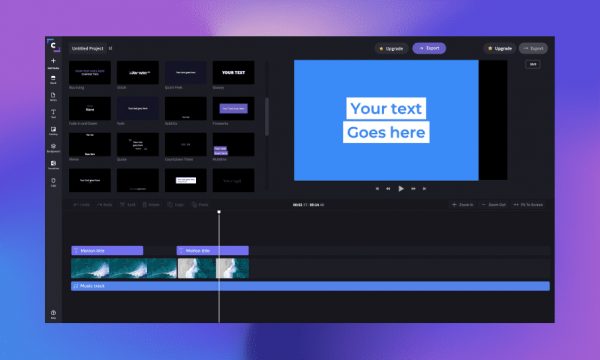

Clipchamp is a free online video editing tool that lets you produce professional-looking videos. As a browser-based app, the software doesn’t require you to download any software. The app is easily accessible through the web browser. You simply need to have click on the Clipchamp icon or shortcut on the browser and begin editing away. It features basic editing options for your audio, video, and image files. You can alter the dimensions of your video and also adjust its color and brightness.
Some examples of advanced features include tools for changing backgrounds and transitions. There’s also a Green Screen editing option that helps you add digital overlays to the video. Meanwhile, an AI Voice Generator allows you to turn your text into speech. This can be useful when you want to rely on an AI voice instead of your own to cover a screen capture video. You can use this to add subtitles to videos that you’ve already narrated.
An audio visualizer can help you visualize your audio files in their digital form. The program also features a library of video clips and music files that you can add to your video projects. Best fit for amateur video makers, Clipchamp is a must-have on this list.
Get Clipchamp from Chrome Web Store
Visit Clipchamp Official Website
9. Skype
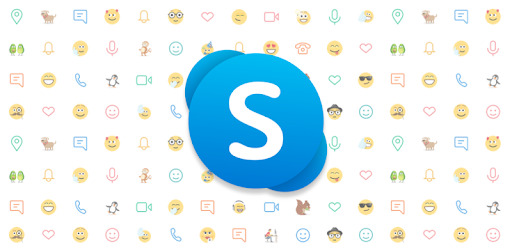

Skype is one of the more popular tools in the video conferencing market. Luckily for Chromebook users, they also a full-fledged web-based platform for Skype. The web-based platform features everything that you can find on desktop and mobile apps. All you have to do is to provide your Skype ID and password on the Skype for Web log-in page. The web application will automatically sync your contacts from your Skype account.
It also allows you to make and receive calls, just like in the mobile and desktop apps. Each video or audio call can accommodate a maximum of 50 participants at once. You can also record and save recordings of video calls. But the amount of time you get to keep the recordings depends on your subscription.
You also get the standard screen-sharing features for video calls. You can customize settings and toggle which contacts can call you. You can block calls from unwanted contacts and set notifications. Its excellent collaboration features, not to mention the free packages that come with it, make Skype one of the best Chromebook apps.
Get Skype from Chrome Web Store
10. Dropbox
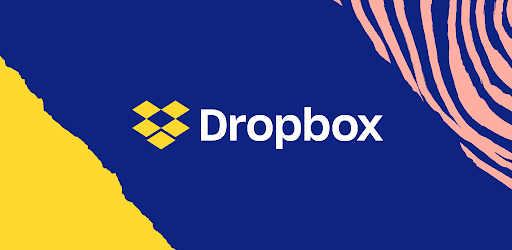

Google Drive may be the default cloud storage and Chromebook app, but not everyone has a subscription to Google Drive. Moreover, a large number of people also prefer alternative cloud storage options. If you prefer Dropbox or have an account, there are two ways to get into your Chromebook. The first is by downloading the desktop app through Google Play. And the other is by accessing the web-based application. Both platforms allow you to access your files which automatically sync to the cloud.
Another way to access Dropbox is by using an extension called File System for Dropbox. To get started, download the file extension from the Chrome Web Store. Open the program, click on the mount option, then sign in to your Dropbox account. From that point, you should be able to drag and drop files as you go. They will automatically sync on the cloud.
Assuming that you have a Dropbox account, you should be getting anywhere from 3-5 TB of storage space. The good thing about Dropbox is that they also offer customized storage space. This means you can choose the amount of storage you get depending on your needs. All of your files are encrypted during transit and while in storage for extra security. It also lets you create and share documents and files in real-time. You can even add an expiry date on the share links for sensitive files. You can also comment on files and view recent edits like in Google Drive.
Get Dropbox for Gmail from Chrome Web Store
Visit Dropbox Official Website
11. Evernote
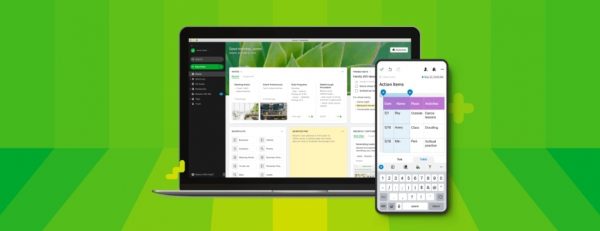

Evernote is a cloud-based note-taking service with a versatile platform. The software started out as a mere tool for taking down notes and saving links from the web, but it has since become a more robust solution for collaboration and research. With each note that you create, you get a lot of options for customizing templates and formatting. You can also create notebooks with compilations of your notes. With these notebooks, you are free to add images, PDFs, links, and more. There’s also a search function for your notes and files stored within the app.
The other feature that makes Evernote stand out is its cloud-based syncing. This helps to preserve the integrity of your notes across different devices. However, we need to emphasize that this syncing feature works best for the desktop. You won’t be able to save your work on the web-based application if your internet or the app crashes unexpectedly. At least with the desktop or mobile app, you will be able to save your work offline. This is also why we recommend the desktop app for Chromebooks.
Evernote has a Web Clipper feature that lets you grab articles from the web. This feature lets you save entire web pages or simplified versions of web pages. Another key advantage of Evernote is its widespread integration with professional apps. Integration means you can create and share notes with external apps. Examples of integrated apps include Slack, Outlook, Google Drive, among others.
Get Evernote (Web Clipper) from Chrome Web Store
Visit Evernote Official Website
12. Screencastify
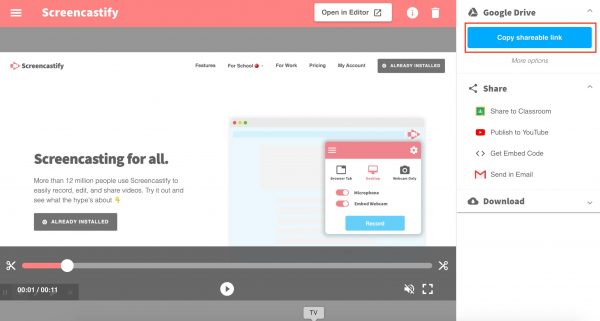

Screencastify is one of the more powerful Chromebook apps available. The app functions as a screen recorder and voice recorder for screencasting activities. It records a video of your on-screen activities and your voice as you narrate. Screencastify was designed as an app extension for Chrome OS. However, it’s not pre-installed on Chromebooks and must be installed from the Chrome Web Store.
With this app, you can choose whether to capture your entire screen, a special tab, or your webcam only. The app will also give you the option to include a miniature video of yourself on the side of the screen capture. The app also features digital tools like a mouse spotlight, a drawing pen tool, and a highlighter tool. Once you’re done recording, the app automatically saves your recordings to Google Drive. You can download the link directly as an MP4 file, animated GIF, or MP3. You can also copy-paste the Google Drive link onto any social media or email channels. This also includes content-based websites like YouTube, Vimeo, or DailyMotion.
While this app offers a complete set of tools for free, there is a catch to using this service. The first five minutes of screencasting or recording are free, but the app will add a watermark if you exceed five minutes of recording. The only way to get as much recording time as you need is to get a premium subscription. Nonetheless, this is a solid app to try for beginners in the art of screencasting.
Get Screencastify from Chrome Web Store
Visit Screencastify Official Website
What Sets Chromebooks Apart from Mac and Windows Devices?


At first glance, Chromebooks don’t appear to be any different from traditional laptops. But if you look a little closer, there are several things that set it apart from your Windows or Mac computers. If you want to know just what makes the Chromebook unique, here are some of its key differences:
1. Operating System


One of the more obvious things that make it different is the operating system. A Chromebook runs on Google’s Chrome OS. The version on Chromebooks is slightly advanced than your Google Chrome web browser. But at its core, it’s essentially the same.
Another defining factor for Chromebooks used to be its focus on Google-based software. Normally Windows-based devices are filled with Windows apps, and the same is true for Macs and their Apple-based apps. This one is just limited to the Chrome browser. The main tab on the home page also contains shortcuts to other Google apps like Gmail and Google Docs. On the desktop, you’ll find a search button instead of the Windows button.
But like other brands, Chromebooks also offer system controls and options for personalization. There’s a status bar sitting on the lower-right corner of the desktop. This one provides quick access to system controls like Bluetooth, volume, and settings. There’s also a settings bar where you can personalize the wallpaper and theme. This is also the go-to section for customizing the settings of the keyboard and display.
2. Running Applications


Another key difference with Chromebooks has to do with the way it opens applications. The typical way Windows and Mac devices open apps are by opening a separate window dedicated to the app. But with Chromebook, the apps normally launch as a separate tab on Chrome. This helps keep the desktop free from installed software that not only reserves internal storage but also keeps the device safe from potential malware. Only a select few applications open in a separate window. These include software like Files, Get Help, and Chrome Remote Desktop.
Originally, Chromebooks didn’t allow users to download external apps. That meant all your interactions on Photoshop or Skype had to be conducted online. Nowadays, they already allow users to download external apps through the Google Play Store. However, only select Chromebook models have the Google Play Store.
This means that not everyone with a Chromebook will get access to Android apps, and some will have to stick with Google apps. It really depends on which edition of Chromebook you own. But going back to the Google-based apps, all of them are cloud-based, which means they are automatically updated whenever you have an internet connection.
3. Overall Costs


Another key difference with a Chromebook has to do with cost. Chromebooks are generally cheaper than any Macbook and most Windows devices. A typical Chromebook would probably cost only 1/4 of the total cost for a Mac book. Most Chromebooks retail anywhere between USD 200 to USD 500, with a few exceptions. There are few entry-level Windows devices for that price range.
On top of that, Chromebooks are much better at running Google-based apps. If you’ve always been fond of Google products, then it’s a definite win. If you think Chromebooks are the right product for you, check out this list of the best Chromebooks to help you stay organized.
4. Build Quality and Display


Another feature that’s worth mentioning about Chromebooks is their build quality and display. Chromebooks are not really that different from Windows build-wise. Both brands make use of plastic coverings that have the same screen quality. Most Chromebooks come with 1920 x 1090p resolution, which is also the average for Windows. We’re not going so far as to compare Chromebooks with Macs; Macs clearly have the upper hand in terms of physical design.
Nonetheless, this resolution is already impressive. It’s even more impressive considering that a Chromebook is around 1/4 the price of the cheapest Mac. Select Chromebook models like the Toshiba Chromebook 2 also comes with a full HD display. Moreover, there are other things about design quality that you may like better than with Windows devices.
5. Storage


Another key difference between Windows, Mac, and Chromebook relates to storage. On this aspect, Chromebook fails to gain the upper hand because, as we’ve mentioned, Chromebooks are cloud-based. Google is mostly expecting you to store your files online. But of course, online storage isn’t free either, and you need to spend on a monthly subscription.
But the main point here is they’ve limited hard drive capacity for Chromebooks. In fact, most Chromebooks offer speedy SSDs but only have storage on average of 16GB to 32GB. Most people would consider 32GB as basic storage, and it’s often the least you can get with Windows. It’s not all bad, though. Google does offer free 100 GB storage on Google Drive for the first two years. That is really not a lot of free space, but then again you can always upgrade to premium options.
Final Thoughts on the 12 Best Chromebook Apps to Increase Your Productivity


Google has always marketed Chromebooks as cheaper alternatives to both Windows and Mac. The brand has also always been known for its single-minded approach to apps, as they’ve always prioritized Google apps above all else. But now Google Chrome is opening its doors to Android apps and even Linux-based apps. This radical change will allow users to accomplish so much more than before.
The standard Chromebook might not be able to fit in a lot of apps. But at the very least, users finally get to choose the apps they want and need. There are currently thousands or even millions of Chromebook apps or Android-based apps on Google Play and the Chrome Web Store combined. This, in turn, brings about endless possibilities for Chromebook users. If you want to get the most out of your experience with Google and Chromebooks, you might also want to consider upgrading to Google Workspace.







